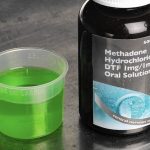Staph skin infection
What are staph skin infections?
Staph bacteria are often found on your skin or in your nose. Even healthy people can have staph bacteria on their skin. It usually doesn’t cause any problems.
A staph infection of the skin happens when staphylococcus bacteria gets inside your body and affects your skin.
Examples of staph skin infections are
- wound infection
- cellulitis
- staphylococcus scalded skin syndrome (SSSS)
- impetigo
What are the symptoms of a staph skin infection?
The symptoms of staph skin infections can range from mild to serious.
Wound infections
Wounds happen when the skin is broken from a graze, cut, insect bite or other injury. Any wound could become infected with staph bacteria. A wound may be infected with staph bacteria if it:
- is red, hot, swollen and painful
- leaks pus or liquid which may be honey coloured and crusty
- heals slower than usual
- has an unpleasant smell.
Cellulitis
Cellulitis is a spreading inflammation of the skin and the tissues directly beneath it. It usually starts with a small wound that isn’t treated properly with antibiotic medicines.
If you have cellulitis you might have nausea, shivers and chills. Your skin can be:
- red
- hot
- swollen
- tender or painful to touch
Staphylococcal scalded skin syndrome (SSSS)
Staphylococcal scalded skin syndrome (SSSS) is the most serious staph skin infection. It usually affects babies and children under the age of 5. It happens when the staph bacteria make a poison that damages the skin. This makes the skin look like it has been burned with boiling water.
Your child may have SSSS if they have:
- a temperature over 38°C
- a red rash
- skin which is painful to touch
- skin that looks like it is burnt or is peeling off
Impetigo
Impetigo is also known as ‘school sores’. It’s a very contagious skin infection that affects children and infants. It’s easily spread in school and childcare settings.
Your child may have impetigo if they have itchy sores or blisters. The sores or blisters usually have a yellow or brown crust after they burst.
The impetigo rash can be anywhere on the body. It’s common that the rash happens around the nose and mouth.
How are staph skin infections treated?
Most staph skin infections are treated with antibiotic medicine.
Simple infections can be treated at home with topical creams or oral antibiotics. Serious infections need to be treated in hospital.
In hospital you will be given intravenous antibiotics. This means the antibiotic is given through a drip or tube straight into your body.
It is important to make sure that staph infections aren’t spread to others.
What is Methicillin-resistant Staphylococcus aureus (MRSA)?
The most common staph infection is caused by bacteria called Staph aureus. If these bacteria are resistant to usual antibiotics, they are called Methicillin-resistant Staphylococcus aureus (MRSA).
The usual antibiotic, methicillin, doesn’t work to treat MRSA. An MRSA infection is very serious.
Due to MRSA, doctors are now more cautious about prescribing antibiotics. You should only use antibiotics when you really need them. This can help to reduce the risk of bacteria becoming resistant.
When should I see my doctor?
If you think that you have a staph skin infection, it’s important to see your doctor as soon as possible.
Severe staph skin infections, like staphylococcal scalded skin syndrome (SSSS), may need to be treated in hospital.
See your doctor if:
- you have a skin infection — an area of red, hot, swollen, irritated or painful skin, or blisters filled with pus
- you have a fever
- the infection is getting worse or spreading
- you have a weakened immune system
- you keep getting staph infections
How do I avoid getting a staph skin infection?
In most cases you can avoid getting a staph skin infection through basic hygiene. Always wash your hands thoroughly with soap and running water. Then dry them with a clean towel, or disposable paper towel.
If you live with someone who has a staph skin infection you shouldn’t share your personal items with them. Don’t share your:
- toothbrush
- towels
- clothes
- linen
Wash their towels and bed linen every day. Wash your hands straight away if you touch anything that might have the staph bacteria on it.
Children with impetigo should not go to school or childcare until they have had 24 hours of antibiotic medicine.
They can go back to school if all the blisters have dried out. Or if all their sores are covered with watertight dressings.



